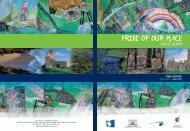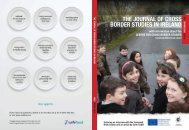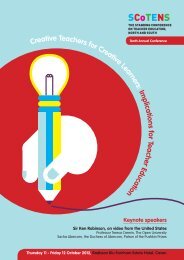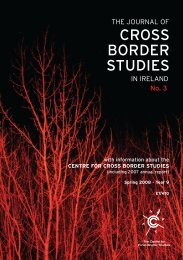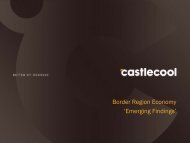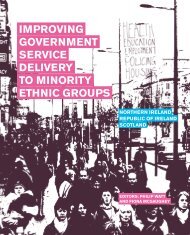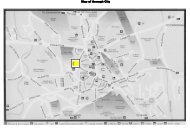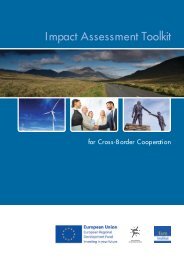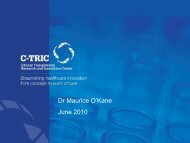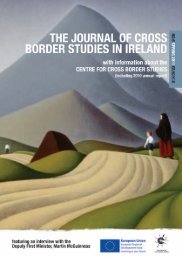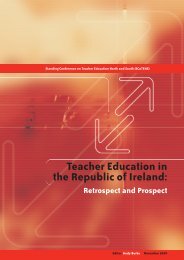4858 Mental Health Report - National University of Ireland, Galway
4858 Mental Health Report - National University of Ireland, Galway
4858 Mental Health Report - National University of Ireland, Galway
Create successful ePaper yourself
Turn your PDF publications into a flip-book with our unique Google optimized e-Paper software.
Findings from the Compatibility and<br />
Comparability <strong>of</strong> <strong>Mental</strong> <strong>Health</strong> and<br />
Related <strong>Health</strong> Data Sources<br />
6<br />
PHASE 1<br />
In the first phase <strong>of</strong> this project a total <strong>of</strong> 25 organisations or individual persons<br />
responded with information about their involvement in mental health research in<br />
the form <strong>of</strong> reports, articles and questionnaires or interview schedules used in the<br />
data collection process. Following analysis <strong>of</strong> the 25 responses obtained, it was<br />
subsequently noted that nine <strong>of</strong> these reports did not have information related<br />
to a definable population-based survey. These nine responses would be more<br />
accurately characterised as organisational annual reports, strategy documents or<br />
clinical surveys rather than population-based survey reports. A further two<br />
surveys, while population based, related to attitudes towards mental health and<br />
well-being and were not considered directly relevant for mental health<br />
monitoring purposes.<br />
Details were received <strong>of</strong> 14 surveys which did meet the inclusion criteria for this<br />
study. Table 5 lists the authors and study names and Table 6 describes the<br />
associated survey design, methodology, target population, sample size and year<br />
the survey work was undertaken. Ten surveys were carried out in the Republic <strong>of</strong><br />
<strong>Ireland</strong>, three in Northern <strong>Ireland</strong> and one was performed in both jurisdictions<br />
plus the USA.<br />
All the surveys were cross-sectional in design and had been carried out in the<br />
previous four years, with the exception <strong>of</strong> the Living in <strong>Ireland</strong> Survey <strong>of</strong> 1994<br />
which was a panel survey, and the cross-national survey which was circa 1995. The<br />
target population for the majority <strong>of</strong> the surveys in each area was adults, defined<br />
as 18 years and over in the Republic <strong>of</strong> <strong>Ireland</strong> and 16 years and over in the<br />
North. The <strong>Health</strong> Behaviours in School Children survey was the only survey<br />
relating to younger people and was performed in both the North and South <strong>of</strong><br />
<strong>Ireland</strong> using a self-administered questionnaire completed in a classroom setting.<br />
The smallest sample size from all the studies was 131 and the largest 16,600. A<br />
variety <strong>of</strong> sample frameworks were used across the various surveys.<br />
Of the adult surveys, in the Republic <strong>of</strong> <strong>Ireland</strong> there were five national, two<br />
regional and two local, and two regional in the North. Three <strong>of</strong> the national<br />
surveys in the Republic <strong>of</strong> <strong>Ireland</strong> related to the general population. The sample<br />
for both components <strong>of</strong> the <strong>National</strong> <strong>Health</strong> and Lifestyle Survey (SLÁN) was<br />
selected from a nationally representative population framework, the electoral<br />
register. While the sample for the main component was randomly selected and<br />
nationally representative across various socio-demographic and economic<br />
groupings, a smaller sub-sample was used in the examination component and<br />
resulted in a quota based sample. The main component <strong>of</strong> SLÁN used a<br />
postal self-administered questionnaire, while in the examination<br />
component the participant attended a clinic and was given the<br />
questionnaire to complete during the examination process. The<br />
Living in <strong>Ireland</strong> Survey is part <strong>of</strong> the ongoing European<br />
Household Panel Survey, a Europe-wide harmonised approach<br />
95



